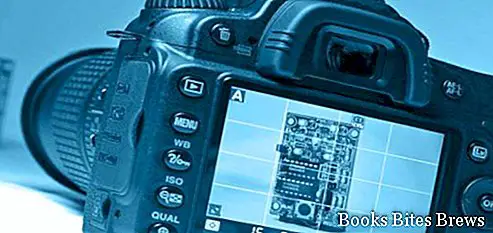Basics and principles of digital photography, a quick guide on how to take beautiful photos.
How to take beautiful photos
A digital camera can be defined as the modern interpretation of the traditional film camera.
For this reason we can say that the fundamental concepts for making good photographs are the same as for analog photography.
In the digital camera, a sensor (ccd or cmos) capable of capturing an image transforming it into an analog type electrical signal is used instead of the film.
This signal is converted into digital by a processing chip inside the device that functions as an analog / digital converter and the digital data obtained is stored on the installed memory card.
For digital cameras, the distinction between compact camera, prosumer and reflex camera applies as well as for analog cameras.
The prosumer type, a term deriving from the terms professional and consumer, constitutes an intermediate band between compact cameras and SLR cameras and in characteristics is very similar to SLR cameras but incorporates a non interchangeable zoom lens such as SLR cameras; despite what may seem to be a limitation excluding the use of alternative lenses, the final result of some prosumers is often equal to or greater than low-end SLR cameras, especially if the zoom mounted has a wide focal range, which can also be between 28mm up to 400mm equivalent 135.
It should be noted that in a prosumer, the fact of not exposing the inside of the camera to the air and therefore the sensor during lens change avoids an accumulation of dust on the sensor and therefore a degradation of the images taken.
Resolution
The fundamental parameter of digital cameras is that of resolution even if to obtain a good photograph of medium-small dimensions (10 x 15 or 13 x 18) a very high resolution is not necessary but a much more important quality optic and a sensor that produces little digital noise (artifacts more or less visible in the photo taken).
The resolution will be chosen on the basis of the print format to be created and any subsequent processing on the computer.
Sensor
The sensor can be CCD, but also C-MOS. These devices formed by photosensitive semiconductor elements have the task of transforming a light signal into an analog electrical signal.
Recommended readings- Resolution for digital printing: the best for every format
- Photography: basics, history from analogue to digital
- Photo shoot: meaning, what it consists of
- Digital cameras: guide, features, advantages
- How to make beautiful landscape photos: tips and techniques
Subsequently, the analog electrical signal is converted into digital by another device called an analog-to-digital converter.
At this point the digital data are in raw form (RAW format) and can be stored directly on a file for subsequent processing via PC or compressed in jpeg format to drastically reduce its size.
In this second case, jpeg compression, a processor inside the camera transforms the raw raw data, calculating and reconstructing missing components on each pixel, thus making the jpeg files obtained with the most common image display systems compatible.
The files obtained are stored on the camera's memory card which can contain a variable number according to the memory capacity itself and the size of the files obtained.
The total resolution of the sensor is measured in millions of total pixels. A pixel is the image capture unit and represents the smallest part of the image that the camera is able to capture.
The proportion of the image obtained with current sensors is 4: 3 (digital format) or 3: 2 (analogue film format that can be set as an option on some types of cameras).
Multiplying the pixel value of the horizontal resolution by that of the vertical resolution gives the total number of pixels that the camera is capable of reproducing.
A good sensor must have a good signal-to-noise ratio appreciable especially in photographic shooting in low light conditions (reduction of any image artifacts produced by the electrical background noise of the photosensitive elements of the sensor itself) and a good resolution regarding the number of pixels which allows you to reproduce more image details in relation to the print format.
If the images are intended to be viewed on a television screen, it is not relevant that they were taken at very high resolution, but if you intend to make large format prints then the resolution becomes a parameter to be kept in mind.
The more you want to make a large print of a digital photo, the more the camera will have to produce images at a high resolution.
Here are some examples: a photo in standard format of 14 x 11 cm requires 1.2-2 megapixels of resolution to be equal to a product of a traditional camera, to print on a 20 x 30 you need from 2 to 3 megapixels, 5 megapixels are needed to make a 50 x 70 cm poster
Memory cards
After the conversion of the incoming signal from the sensor and processed by the image processor, the image file obtained is stored by the camera on a removable memory card.
The most commonly used memory card formats are: compactflash, memorystick, microdrive, secure digital (SD), mini-SD, Smartmedia and Xd.
Image storage formats
The formats most used in digital cameras for saving photographic images are: Jpeg, allows you to save images in files of varying sizes depending on the percentage of compression used, and Raw, a raw format without any processing by the internal processor of the camera generally used only in some professional fields.
The raw data must be reconstructed with a computer using a special program compatible with the specific protocols defined by the manufacturer for the sensor used.
Video
Avi (codec divx mpeg4), Mov (quicktime) and real media are the formats used by cameras that can also shoot movies.




